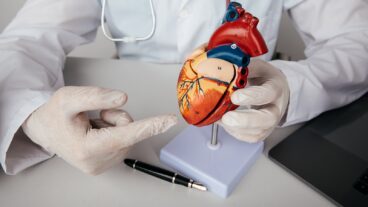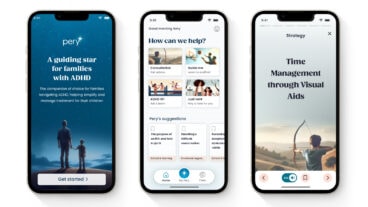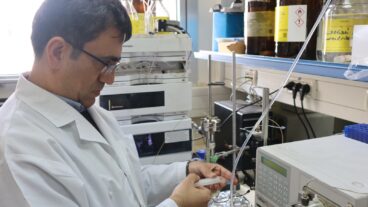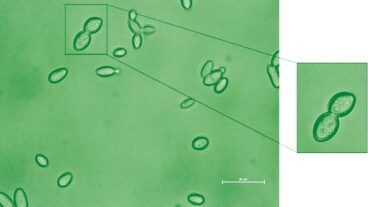The PeriBoost enlarges and expands the small blood vessels around the artery, ensuring that you receive a steady flow of blood to the lower extremities despite the plaque blockage.The best thing to do if you suffer peripheral arterial disease (PAD), a chronic condition that happens when a plaque blockage occurs in a peripheral artery in the legs or pelvis, is to walk. Walk, and walk, and walk. The act of walking enlarges and expands the small blood vessels around the artery, ensuring that you receive a steady flow of blood to the lower extremities despite the plaque blockage.
For some patients with PAD, however, walking just isn’t possible. Perhaps they have an injury or swelling, perhaps they are elderly or diabetic. The upshot is that oxygen-rich blood does not reach the lower limbs. This causes pain, changes in skin color, ulcers and difficulty in walking. But if the plaque blockage – made of fats and cholesterol – grows large enough to completely block the artery or ruptures to form a blood clot, the result is a total loss of circulation to the legs and feet, which can cause gangrene and amputation.
Nearly 12 million Americans now suffer from PAD, and experts predict this number will rise to 19 million. While there are existing treatments including angioplasty, atherectomy, or bypass for some of these people, for the 750,000 patients whose condition has deteriorated into critical limb ischemia (CLI), there is no existing therapy. These ‘no-option’ patients are not candidates for conventional treatments, have an alarming mortality rate, and face imminent amputation. Every year in America some 187,000 no-option patients undergo amputation of a lower limb.
Now Israeli start-up PerAssist has developed a new treatment that may give these no-option patients a chance to save their limbs. The company’s innovative peri-arterial booster device called PeriBoost improves blood flow to the lower limbs of PAD patients in much the same way that walking does.
A PeriBoost sleeve is fitted around a major, intact, healthy blood vessel – usually the femoral or iliac arteries – near the diseased peripheral region using a minimally invasive laparoscopic procedure. A balloon is then inserted between the artery and the sleeve, and is held in place by the sleeve. The balloon is inflated and deflated in synchronization with the patient’s heart beat. An external control device includes an ECG.
This pumping action squeezes the blood downstream, ensuring that blood flow in the artery is maximized. By doing this it enlarges the small arteries around the blockage, bringing more blood down to the lower limbs.
“We aren’t treating the block,” says Roni Bibi, the CEO of PerAssist, “We are bringing more blood downstream, enlarging the velocity and flow to the small arteries by about 90 percent, to recover the leg and avoid amputation.”
The treatment, which has not yet undergone clinical trials and is designed for the legs only, is designed to be carried out daily for three hours over three months. It is not painful, according to Bibi, and the patient can function normally throughout the procedure.
“The blood vessel is not like a muscle, it has no sensors or nerves. All we are doing is pushing it and this does not cause any pain,” Bibi tells ISRAEL21c. “The patient can eat, sleep, read – whatever they want. They won’t feel a thing.”
PeriBoost compares well to existing treatments. For example, it does not require arteries to be incised or perforated, and therefore does not damage artery walls. In one treatment, a doctor will drill inside the artery, remove the blockage and clean the artery from the inside. This is major invasive surgery, can only be carried out in the upper leg, and often ends up as nothing more than temporary relief as the same area becomes quickly blocked again. Stents and bypass surgery are also significant surgical events, and very problematic for the elderly or diabetic.
PeriBoost is likely to be much cheaper than any of these existing treatments, and it can be left in place for future use if peripheral vessels become re-occluded. The only main drawback to PeriBoost is that treatment is slow – three months, rather than a few days of recovery after one surgery.
The idea for PeriBoost came from Dr. Aaron Hoffman, the company’s chief medical officer and director of the department of vascular surgery and transplantation at Rambam Medical Center in Haifa, and a friend of his, water engineer, Gaby Weizman. Hoffman, who is also an associate professor at the faculty of medicine at the Technion-Israel Institute of Technology and has been involved in cutting-edge vascular medicine for over 20 years, recognized the problems in this field for no-option patients and turned to his friend to see if they could come up with a joint solution. In 2005 PerAssist was set up at the Misgav Venture Accelerator. Bibi joined the company as its CEO.
In the last two years the company has taken its device through successful animal trials. “It was the first medical device proven to increase the Ankle Brachial Index [ABI the golden standard for PAD diagnosis] on a large animal model,” says Bibi.
The company now plans to raise an additional investment of $1.5 million to fund it through clinical trials, which are expected to be held in Switzerland, Germany and Italy. The company aims to receive CE approval in the first stage, and afterwards look for FDA approval. If all goes according to plan, the product could be out in the European market by the end of next year, and in the US in 2009.
“This is a good project and it can help a lot of people,” says Bibi. “For so many patients there is no solution today except amputation. We are holding out the promise of an alternative.”![]()
Slashdot It!![]()













